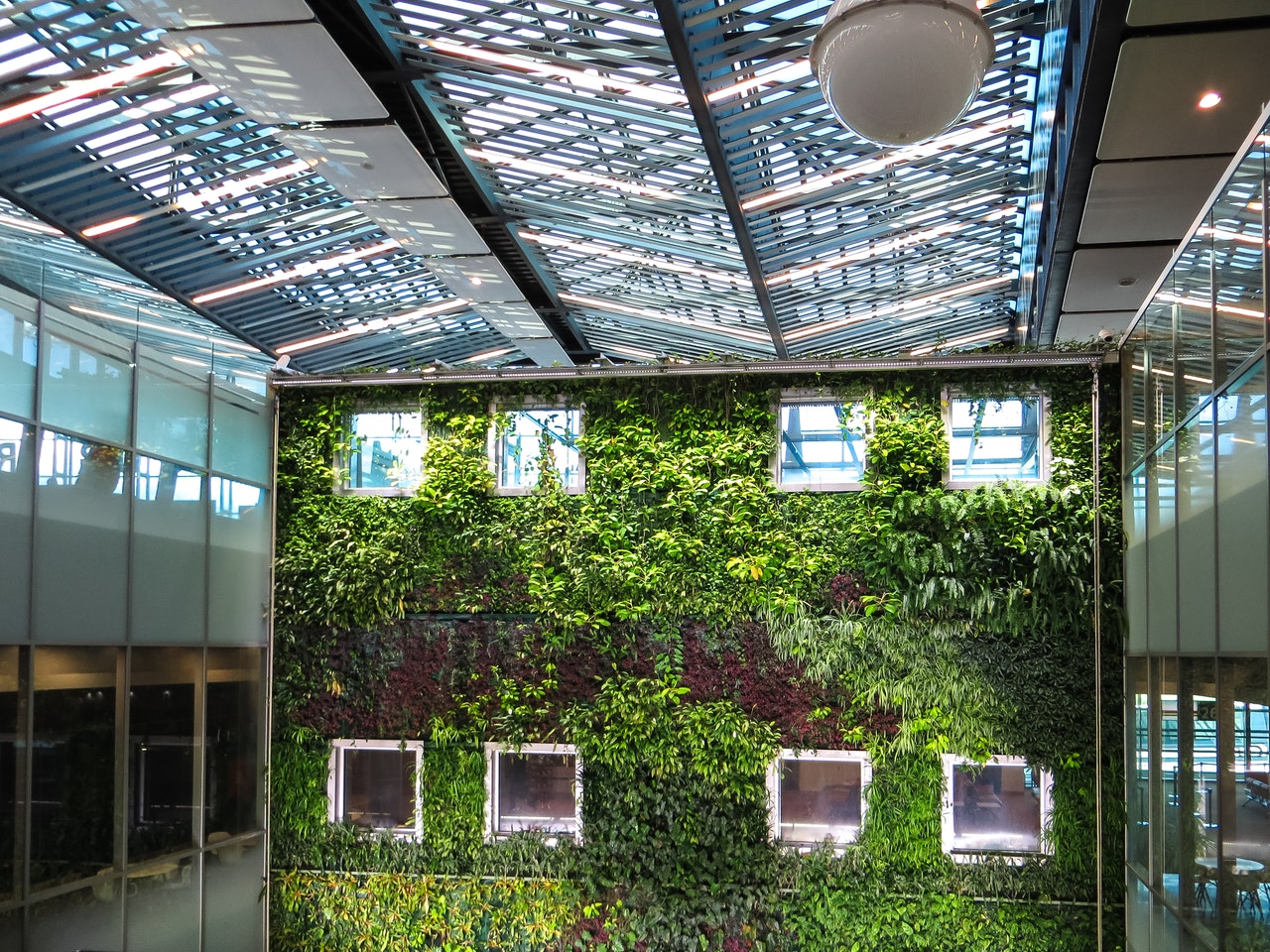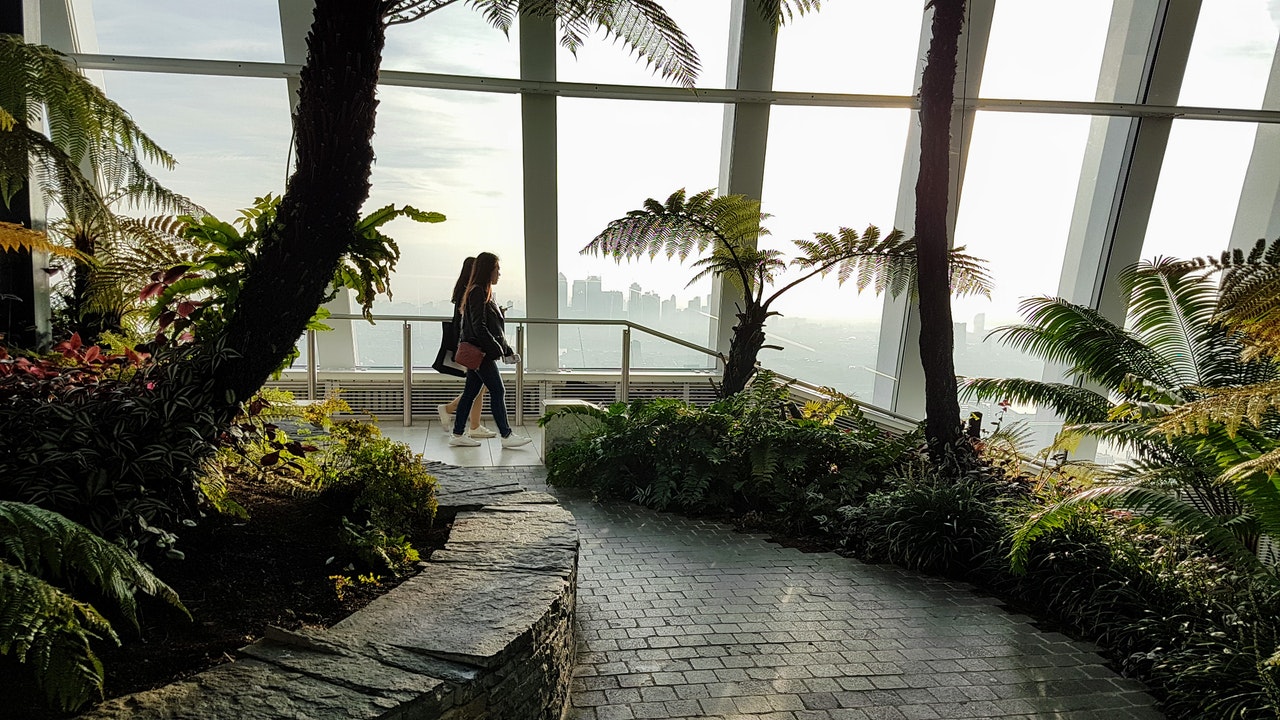Blog
Article

Nov 8, 2021
Scottie Elliott
In our ever-growing universe, there’s only one place we all call “home,” and it’s Earth. We have a responsibility to care for our tiny blue planet, not just for posterity, but also for this present moment.
In the last few decades, there’s been a push to incorporate environmentally responsible practices into all areas, especially building and interior design.
As an interior designer, the choices you make will impact not only your immediate clients but also countless others, and for years into the future.
In this guide, we’ll explore many of the ways that you can incorporate sustainability into your design and building architecture.
The Principles of Sustainable Design

To understand how sustainability impacts interior design, let’s quickly define sustainability.
Sustainability is one of the key tenets of environmental ethics and is itself made up of three principles: profit, people, and the planet.
This framework is known as the “Triple Bottom Line,” a term that was first coined by John Elkington.
Without getting too far into the weeds, we can break down the Triple Bottom Line in this way:
Profit
Sustainability doesn’t just focus on the environment (i.e. the planet).
To survive, companies must generate a profit. Companies seek to maximize profits and minimize costs.
People
Businesses also impact people. They must provide value for their own pockets, but they must also generate value for their employees, their customers, and their community.
Planet
The final principle dictates that the environment must be protected from unchecked capitalism. The Industrial Revolution dramatically changed the world, including the physical earth. Factories introduced wide-scale environmental pollution that affected air, water, and soil. Due to its reliance on fossil fuels, many scientists believe that the Industrial Revolution led to climate change.
While it’s easy to turn climate change into a political talking point, it’s important to note that sustainability belongs to no political ideology. Instead, sustainability is a set of practices that your business can incorporate to benefit both people and the planet, while also making a profit.
One does not exclude the others.
Many consumers want to be environmentally responsible and are in fact willing to pay more.
How to Introduce Sustainability Into Your Design
We’ve just discussed an overview of sustainability. From an interior design perspective, here’s a broad look at how you can positively contribute to a sustainable future for our planet:
Focus on Energy Efficiency
According to the Environmental Protection Agency (EPA), carbon dioxide emissions from the combustion of fossil fuels result in 65% of the global greenhouse gas emissions. This has a direct impact on climate change. Consider all of the energy appliances you incorporate into your design, from lighting to heating/cooling. Instead of sourcing products that run off of non-renewable resources, consider the alternative. Look for items, even light bulbs, that are energy-efficient.
Also look for ways to minimize the reliance on energy sources. For example, you can reduce heating needs by smartly adding window coverings (such as blinds, curtains, etc.).
Insulate the space well. In addition to wall and ceiling insulation, you can use carpet to raise the ambient temperature in a space.
Also consider adding other energy-generating elements, such as solar panels and wind turbines.
Check out these tips from A Designer at Heart to improve the energy efficiency in your design.
Use Sustainable Materials
Use and reuse materials that can be produced without damaging the natural environment. Source legally harvested timber. Consider using rapidly renewable materials in your designs, including bamboo, cork, and straw bale.
As Pedro Gomes states in his article, “Carbon-Neutral is not enough. Learn more about Carbon-Negative Materials,” you should make use of bamboo in particular as a renewable and sustainable material. Bamboo releases 35% more oxygen than trees. Bamboo also absorbs carbon dioxide in the process.
Research Your Materials
Don’t just trust that a material is eco-friendly or made from recyclable material. Verify. It’s up to you to make sure that your products come from environmentally responsible processes.
Recycle and Reclaim
When designing, select recyclable or reusable products that can continue to live beyond their initial use. Share with clients how this product can continue to serve other users. Alternatively, choose products that can be responsibly recycled.
Choose Local When Possible
To cut down on transportation and its associated pollution, source items that are as local to your client as possible.
Source Materials that Lower Carbon Emissions
Think about carbon.
You can no longer afford to ignore carbon and its impact on our world.
Reduce your carbon footprint. The first step is to identify if the products you choose contribute to greenhouse gas emissions. Next, source products that are carbon neutral or even carbon negative. An item is carbon neutral if it removes the same amount of carbon dioxides that it produces. An item is carbon negative if it removes more carbon than it produces.
Carbon neutral materials may include timber, aluminum, and steel.
Carbon negative materials can include bioplastic, bricks, and concrete.
Also, did you know that you can also use materials made from air pollution? Some innovative companies are using methane and carbon dioxide gases to produce carbon negative materials, such as paints, pigments, and plastics.
Incorporate Biophilic Design

Biophilic design is the use of nature in buildings and interior spaces. You’ve seen this design in action in various ways, including living walls, rooftop terraces, and indoor solariums.
Biophilic design is built on six main principles:
1. Environmental – It uses elements from the natural world
2. Natural shapes and forms – Instead of straight lines and perfect right angles that are rarely found in nature, biophilic design incorporates more imperfect and organic shapes
3. Natural patterns and processes – Biophilic design uses natural properties to create unique transitions
4. Light and space – Light plays a key role in biophilic design, as it does in nature. Biophilic design looks for natural ways to introduce light and shadow into spaces
5. Place-based relationships – This principle focuses on the human culture of the environment and makes use of materials that are native to the location
6. Evolved human-nature relationships – This principle relies on our relationship and history with nature
People appreciate biophilic design. After all, everyone loves a room with a view. Or a skylight that lets in natural light. Incorporating natural elements into your design isn’t just aesthetically pleasing, but it also makes use of natural resources that may otherwise be destroyed.
Learn more about what is and what is not biophilic design here.
Use Life Cycle Assessment
Before prototyping, perform a life cycle assessment on all of the materials that you plan to use.
What is a life cycle assessment?
A life cycle assessment, or LCA for short, is a framework for measuring the impact that a product or process has on the environment.
Here’s a quick primer for why life cycle assessment matters in design.
When analyzing the life cycle of any product, you must consider its raw materials, the way that it’s manufactured, how it’s transported, how it’s distributed, how it’s used, and what happens at the end of its life. How will it be disposed of? Can any of its materials be reused or recycled?
To identify the sustainability of each product, you must consider its entire life cycle. If it’s made from recycled materials but is produced in a way that harms the environment, then that product may not be the right choice.
Because its life cycle can be optimized to be even more carbon negative, consider using bamboo liberally in your designs. This fast-growing, versatile, and sustainable grass can be used for various products, from construction to decoration.
Understand Your Role in the Circular Economy
Embrace the circular economy model.
But first, let’s discuss what it is.
A circular economy is a system that focuses on reducing waste and pollution. The ultimate goal of a circular economy is zero waste.
This economy is built on 3 Rs:
Reduce – Use as few new raw materials as possible
Reuse – Make the most out of the created products
Recycle – If a product cannot be reused, disassemble and recycle its raw materials
A circular economy relies on renewable energy instead of fossil energy. Created products in this economy should be made of high-quality, non-toxic materials that will produce a long lifespan and be suitable for recycling.
By participating in a circular economy, you’ll do your part to lower carbon emissions.
Final Thoughts
Sustainability is not a trend. Instead, you can look at it as a set of smart business decisions that will positively impact your organization, your clients, and our planet.
Sustainability considers how people interact with their environment. It also calculates the financial cost to both the organization and the consumer. If a practice is not financially sustainable (pun intended), it will not survive.
Last, but not least, sustainability depends on our collective ability to think creatively and act responsibly with our resources. Speaking of resources, here’s a starter pack of tools you can use to learn more about sustainability and low-carbon design.
